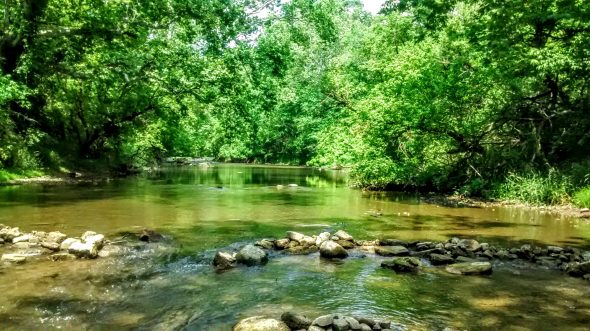
Students from Wright State, in partnership with Glen Helen, have been monitoring water quality in local waterways since 2011. A crowdfunding campaign has been launched to support the project.
Glen Helen, Wright State launch fundraiser for ongoing water quality project
- Published: August 3, 2016
In 2011, Glen Helen and a Wright State University chemistry class began working together to examine the quality of waterways in the Yellow Springs area. Five years later, the partnership continues, and now seeks support through crowdfunding site Go Fund Me to keep the project running.
The project began five years ago when Dr. Audrey McGowin, professor of environmental science at Wright State University, got in touch with Glen Director Nick Boutis. McGowin was looking for opportunities for her students to take part in “service learning,” which engages students, faculty and community members in learning through meeting community needs and promoting civic responsibility and engagement. Together with Dr. David Kammler of Antioch College, Glen Helen and the WSU class crafted a series of questions and concerns about water quality in the area that students have explored over the years, including how runoff and waste affect the water quality of the Glen, how the Glen changes the quality of water passing through it and how to respond when research has concluded.
The project has mounted sites for monitoring water beginning at the north entry into Glen Helen along U.S. 68 and ending at the Jacoby Road canoe launch on the Little Miami River. The sites test for nitrate levels, E. coli presence and other contaminants, and have found that, over the past five years, nitrate levels have risen. In some areas, these levels exceed 10 milligrams per liter, which is the EPA limit for safe drinking water.
“Increasing nitrate in the water is likely the result of human activity in the watershed,” said Boutis via email this week, and a human response is needed in order to combat further pollution. Septic tanks and leach fields, he said, should be properly sized and maintained. Farmers and gardeners should also take care in choosing fertilizers.
“The choice of fertilizer, the amount used and the timing of when it is applied all can be a factor in determining whether the fertilizer stays on the field or goes into the creeks or the groundwater,” he said. “For residents with streams or drainages on their property, it can be hugely important to maintain a buffer zone around the creek [or] drainage — the wider the better, but even 20 feet or so can help filter water before it enters our creeks.”
Those who don’t fit into these categories can also help the effort in one very important way, said Boutis: “If you have pets, pick up after them and properly dispose of the waste.”
Boutis stressed the importance of the project as aiding both the students, who learn about chemistry and fundraising, and the community and visitors to Glen Helen. He cited an instance when students discovered heavy metals that occur naturally in the sediment of the yellow spring.
The Yellow Springs News encourages respectful discussion of this article.
You must login to post a comment.
Don't have a login? Register for a free YSNews.com account.













No comments yet for this article.